The Weirdest Coins Ever Minted: Odd Shapes, Sizes, and Stories
For over 20 years, I’ve hunted coins that make my heart race, but the weird ones—those bizarre, rule-breaking oddities—are the ones that keep me up at night. These are the coins that can raise an eyebrow, provoking surprise or curiosity...

For over 20 years, I’ve hunted coins that make my heart race, but the weird ones—those bizarre, rule-breaking oddities—are the ones that keep me up at night. These are the coins that can raise an eyebrow, provoking surprise or curiosity in even the most seasoned collectors. From a coin shaped like a World War I helmet to a one-of-a-kind, 1-kilo gold behemoth struck for King Charles III’s coronation, the world of unusual coins and numismatics is a wild ride. These aren’t just chunks of metal; they’re bursts of human creativity, cultural quirks, and sometimes sheer madness. Join me as I dive into the strangest coins ever minted, from peculiar shapes to mind-bending sizes and stories that sound like they belong in a fever dream, including the Royal Canadian Mint’s cushion coin and the ultra-rare Charles III coronation kilo coin.
The Allure of Unusual Numismatics

Numismatics can seem like a buttoned-up hobby, often overshadowed by pocket change but its weird underbelly is anything but tame. Most coins are round, practical, and stackable, but some mints toss convention aside, crafting coins that redefine what currency can be. While the vast majority of coins encountered in everyday life are ordinary, it's the rare oddities that collectors seek out. These oddities—whether slabbed and graded or raw—are catnip for collectors like me who crave the unconventional. They’re conversation starters, history lessons, and often investments that outshine stocks.
The psychology of collecting weird coins taps our love for novelty; research shows unique objects trigger dopamine, making these coins as addictive as they are fascinating. Collectors rarely find these coins in everyday life, which makes the hunt to collect them even more thrilling. Let’s explore the strangest coins ever minted, from their shapes and sizes to the tales that make them unforgettable.
Odd Shapes: Breaking the Circular Mold
Coins are supposed to be round, right? Not these rebels. Mints from a variety of countries have toyed with shapes that defy numismatic norms, often to honor events or tell a story. Each country brings its own unique approach to coin design, resulting in a fascinating array of oddities. Here are some of the wildest:
-
Royal Canadian Mint’s WWI Brodie Helmet Coin (2018): To mark the Armistice Centenary, the Royal Canadian Mint issued a silver coin shaped like a World War I Brodie helmet. Its deeply curved, concave surface feels like a miniature war relic, not a coin. The mint’s secretive production technique only adds to its mystique. Slabbed MS-67 examples fetch $200–$300, and its emotional depth makes it a collector’s prize.
-
France’s Rugby Ball Coin (2015): For the Rugby World Cup, France minted a silver coin shaped like a rugby ball, with a concave design that captures the sport’s essence. It’s a tactile delight, and collectors love it, with slabbed MS-68 pieces selling for $150–$250. Holding it feels like clutching a piece of the pitch.
-
Japan’s Oval 100 Mon (date: 1835–1870): With a square hole punched through its oval shape, this copper coin from the Edo period, dated between 1835 and 1870, looks like a time-travel artifact. Used in feudal Japan, it’s as much art as money. Ungraded examples go for $50–$100, but their historical quirk is priceless.
-
Transnistria’s Composite Rubles (2014): These 3, 5, and 10 ruble coins from the unrecognized country of Transnistria are square and made of composite materials, not metal. Their unusual figure and material set them apart from traditional coins. They feel like game tokens but are legal tender, with vibrant designs. A full ungraded set costs $20–$50, making them a quirky must-have.
The existence of such odd-shaped coins from different countries and dates challenges our expectations of what coins should be, highlighting the creativity and diversity found in numismatics.
These shapes aren’t just for show; they carry stories of different denominations —of war, sport, nature, or identity. But shapes are only half the madness. Some coins go extreme with size.
Extreme Sizes: From Micro to Monstrous

Size is where weird coins get truly unhinged, offering a remarkable contrast in size and ranging from slivers you can barely pinch to giants that need a forklift. These extremes push minting tech to the limit and test collectors’ obsessions.
-
Chad’s Black Hole Coin (2023): At 0.15 mm thick and 30 mm wide, this .999 silver coin is the world's thinnest coin, weighing just 1 gram. It's “Black Hole” design uses optical illusion printing, creating a swirling effect. With a mintage of 999, slabbed proof examples sell for $40–$60. It’s so fragile, I handle it like a Fabergé egg.
-
King Charles III Coronation 1 Kilo Gold Coin** (2023)**: Issued by Hattons of London, this one-of-a-kind, 1-kilo, 24-karat gold coin, struck on May 6, 2023, the day of King Charles III’s coronation, is a numismatic titan. Measuring 100 mm in diameter and .9999 fine, it’s the first sovereign coin to depict both King Charles III and Queen Camilla side by side, designed by Jody Clark. Its reverse features the Coronation Emblem with roses, thistles, shamrocks, and daffodils forming St Edward’s Crown. This coin isn’t just huge; its singular status and royal significance make it a holy grail for collectors of weird and regal numismatics. Owning such a coin could be considered a fortune for any collector.
-
Perth Mint’s $1 Million Gold Coin (2011): This Australian monster, 80 cm wide, 12 cm thick, and 1,000 kg of .9999 fine gold, is valued at $1 million AUD. More art installation than coin, it dwarfs even ancient Yap Island stone money. While it is not practical as cash, it represents the ultimate in numismatic extravagance. It’s not for sale, but it’s the largest coin ever minted.
-
Royal Canadian Mint’s Cushion Coin(2019): Part of the “Sculpture of Majestic Canadian Animals” series, this silver coin features a 3D gold-plated statuette of a grizzly bear, cougar, elk, bighorn sheep, or wolf atop a cushion-shaped base. Using 3D laser scanning, the Mint captured every detail of sculptor Karl Lansing’s work, creating a coin that’s half numismatic, half miniature statue. The 100-gram heft feels like a museum piece. The cushion shape, with its soft curves, makes it a tactile standout.
-
Japan’s Gold 2 Shu (1860–1869): This rectangular gold-silver alloy coin, just 11.5 mm x 6.5 mm, is one of the smallest gold coins ever minted. Despite containing only a small amount of gold, it is highly valued by collectors. VF examples cost $80–$120, and its Shogun-era history makes it a tiny treasure in my collection.
From whisper-thin to coronation-sized, these coins prove size can be as bold as shape. But the stories behind some coins are even wilder.
Interactive and Game-Based Coins: Playful Currency

Who says coins have to be all business? In recent years, interactive coins have brought a whole new level of fun to collecting, turning currency into a playground for both collectors and gamers. Take the 2018 “Angry Birds” coin from Sierra Leone—a true game-changer. This coin isn’t just a colorful tribute to the world-famous mobile game; it features a special Zapper code that, when scanned with your phone, unlocks exclusive interactive content. Suddenly, your coin collection isn’t just sitting in a box—it’s coming to life in your hand.
But the playfulness doesn’t stop there. Around the world, mints are experimenting with coins that double as tokens for board games, coins with augmented reality features, and even pieces that can be used in digital games. Some coins boast 3D designs that pop right off the metal, while others invite you to scan, play, or even solve a puzzle. For collectors, these interactive coins are more than just currency—they’re a new way to experience the thrill of collecting, blending nostalgia, technology, and a bit of friendly competition. As the line between coins and tokens blurs, the future of collecting looks more playful than ever.
Gold Coins: The Most Opulent Oddities
Gold coins have always been the crown jewels of any collection, prized for their gleam, heft, and undeniable value. But for modern collectors, it’s the unusual gold coins that really steal the show. Sure, the American Gold Eagle and South African Krugerrand are classics, but what about gold coins that break the mold—literally?
Take, for instance, the German polymer ring 5 Euro coins. While not made entirely of gold, these coins feature a striking combination of copper-nickel and a vibrant polymer center, making them a standout in any gold coin collection. Then there are the rectangular gold coins from Japan’s Meiji Restoration period—tiny, elegant, and packed with history, these coins are a testament to the artistry and innovation of their era. And let’s not forget Palau’s whimsical gold coins, which come shaped like everything from steam engines to footballs and even beer mugs. These tiny treasures prove that gold coins can be as playful and unusual as they are valuable, offering collectors a chance to own a bit of history with a twist.
Bizarre Stories: Coins That Defy Belief

Some coins are weird for their tales—stories of controversy, innovation, or pure oddity that cement their numismatic legend status.
-
Benin’s Marijuana Coin (2010): Benin, a West African nation, issued a gold-plated copper-nickel coin with a green marijuana leaf on the reverse, despite the drug’s global illegality. At 38.61 mm, it’s a brazen statement, and collectors love its cheek. Ungraded pieces sell for $30–$60, slabbed MS-67 for $100. It’s a coin that smirks at convention.
-
Royal Canadian Mint’s Unexplained Phenomena Series (2018–present): These rectangular silver coins, like the 2018 Falcon Lake Incident $20 coin, depict Canadian UFO sightings. Black light technology makes the reverse glow, mimicking witness accounts of bright lights. The shield-shaped design and eerie backstory are hits, with slabbed MS-68 coins at $150–$250. They’re a tech marvel and a nod to Canada’s mysteries, inspired by strange events that happened and left a mark on Canadian folklore.
-
Germany’s Polymer Ring 5 Euro Coins (2018–2019): These copper-nickel coins have a colored polymer ring between the outer ring and center, designed to foil counterfeiters. The 2018 subtropical zone coin (orange ring) and 2019 temperate zone coin (green ring) feature goats and rabbits. Collectors hoarded them, limiting circulation. Slabbed MS-65 pieces go for $50–$100, and their sci-fi vibe feels like currency’s future.
-
Palau’s Scented Coconut Coin (2008): This silver, coconut-shaped coin smells like coconut, thanks to a scented coating. Issued by the Pacific island nation, it’s a quirky nod to local culture. Ungraded examples fetch $40–$80, but the scent fades, making pristine pieces rare, as many have been lost or damaged over time. It’s the only coin I’ve sniffed before buying.
-
Royal Canadian Mint’s Birthstone Coins (2015): These $5 silver coins, each with a birthstone for one of the 12 months, blur the line between coin and jewelry. Their round shape is standard, but the sparkling gems make them unique. Slabbed MS-67 sets sell for $300–$500, and they spark debate: coin or trinket? I call them coins, but their dazzle is undeniable.
From UFOs to scented coconuts, these coins capture the absurd, innovative, and bold, making them more than mere currency. Alternative forms of currency, such as wooden notes, gold-backed notes, and other unusual notes, have also played a role in numismatic history, adding to the diversity and intrigue of collectible money.
The History of Coin Minting: From Ancient Experiments to Modern Marvels
The story of coin minting is as old as civilization itself, stretching from the dusty markets of ancient Lydia to the high-tech mints of today. Early coins were simple—just lumps of gold, silver, or copper stamped with a mark of value. But as societies grew and trade flourished, so did the art and science of coinage. The introduction of alloys like nickel and the development of new minting techniques allowed for more intricate designs and greater durability.
Today, mints around the world—like the legendary United States Mint—produce coins that are both functional currency and miniature works of art. From the iconic Buffalo nickel to the gleaming American Gold Eagle, each coin tells a story of its time, its people, and its place in history. Whether it’s a silver piece from ancient Greece or a modern proof dollar, the evolution of coinage reflects the ever-changing face of money, art, and technology.
Coin Design and Production: Crafting the Unconventional
Designing and producing unusual coins is no small feat—it’s a blend of creativity, precision, and cutting-edge technology. Every coin starts as an idea, sketched out by artists who dream up new shapes, themes, and materials. From there, engineers and metallurgists step in, figuring out how to turn that vision into a genuine piece of currency. The process often involves experimenting with unusual metals, incorporating color, or even using 3D printing to achieve effects that were once impossible.
But with innovation comes challenge. Ensuring that each coin meets strict standards for quality and consistency is a constant battle, especially when working with unconventional shapes or materials. Counterfeiting is another concern, pushing mints to develop new security features and production techniques. Despite these hurdles, the world’s mints continue to push the boundaries, producing coins that are as much art as they are money. For collectors, these unusual coins are proof that the world of numismatics is always evolving—and always full of surprises.
The Collector’s Perspective: Why Weird Coins Matter

Weird coins aren’t gimmicks; they’re a stand against the mundane. For collectors, they offer:
-
Investment Potential: Slabbed and graded weird coins, like the Charles III coronation kilo coin or the Royal Canadian Mint’s cushion coin in MS-68, often appreciate faster than standard issues. Low mintages and high demand drive premiums, sometimes outpacing the S&P 500’s 10% annualized return. The face value of these coins is often far less than their actual market value, making them especially attractive to collectors.
-
Aesthetic Appeal: Like fine art, these coins captivate. The 3D grizzly on the cushion coin or the glowing UFO on the Falcon Lake coin are visual feasts, reducing stress and sparking joy, as art psychology suggests.
-
Historical Significance: Each coin tells a story, from the Charles III coin’s royal milestone to Benin’s marijuana leaf defiance. They’re tangible links to moments in time, with each coin capturing a unique moment in history.
Collecting these coins blends logic and passion in a unique trade. They’re decentralized assets—immune to corporate failures or grid outages—yet they carry the thrill of discovery. Slabbed and graded status, often by PCGS or NGC, ensures authenticity and value, making them a smart portfolio addition.
Conclusion: The Enduring Appeal of the World’s Weirdest Coins
In the vast world of coins, it’s the unusual, the rare, and the downright bizarre that capture our imagination. Whether it’s a coin shaped like a helmet, a tiny gold piece from a distant land, or a token that unlocks a digital game, these small pieces of metal tell big stories. For collectors, each coin is a treasure hunt, a lesson in history, and a work of art all rolled into one. The thrill of discovering a rare or unique coin is matched only by the joy of sharing it with others, connecting us to cultures, eras, and people from around the world.
As currency continues to evolve, so too does the art of coin collecting. The world’s weirdest coins remind us that even the tiniest objects can hold immense value—not just in dollars or gold, but in the stories they tell and the wonder they inspire. Whether you’re a seasoned collector or just starting out, there’s always another unusual coin waiting to be discovered, proving that the world of numismatics is as rich and varied as history itself.
Related Articles
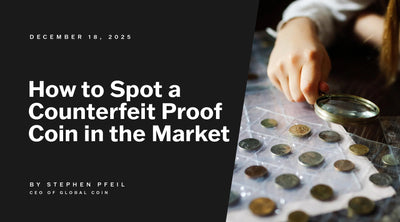
How to Spot a Counterfeit Proof Coin in the Market
How to Spot a Counterfeit Proof Coin in the Market In the world of numismatics, few things hold ...
Discover More
BREAKING NUMISMATIC NEWS: Large batch of 2025 Marine Privy Coins MELTED by U.S. Mint
BREAKING NUMISMATIC NEWS: Large batch of 2025 Marine Privy Coins MELTED by U.S. Mint A historic ...
Discover More
Tax Implications When You Sell Gold Bullion in Different States
Disclaimer: The following content is for informational purposes only and should not be construed ...
Discover More

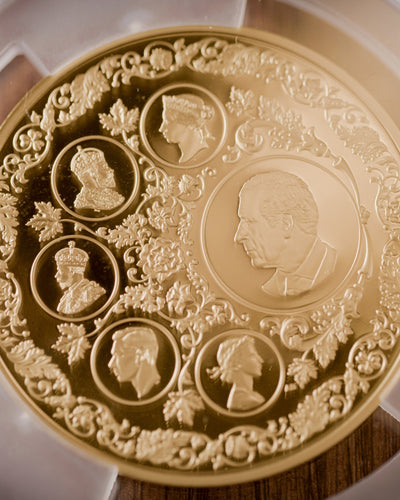
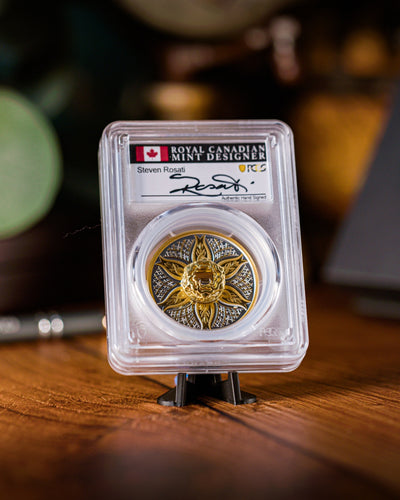
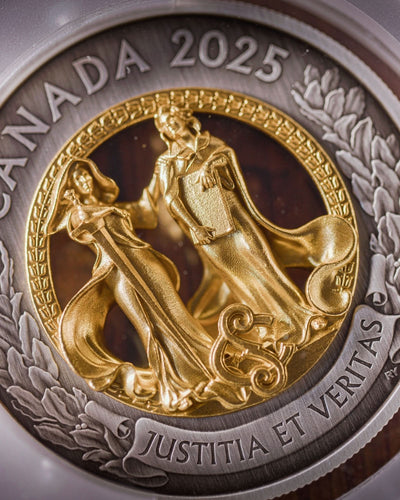
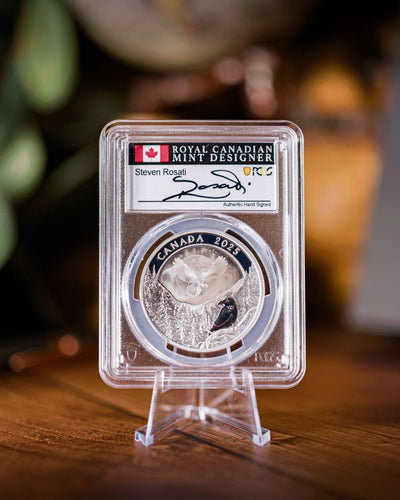
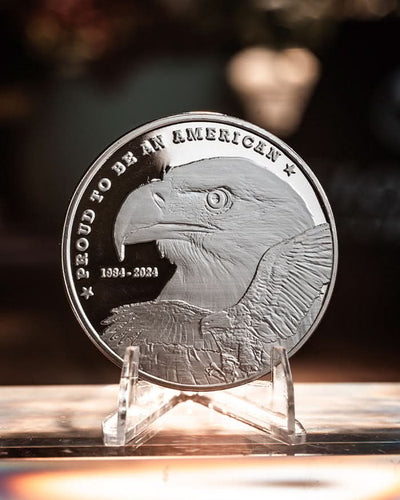
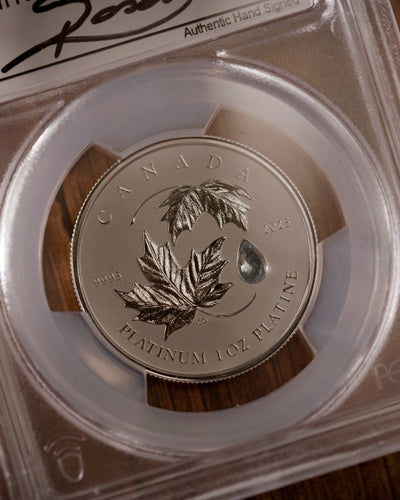
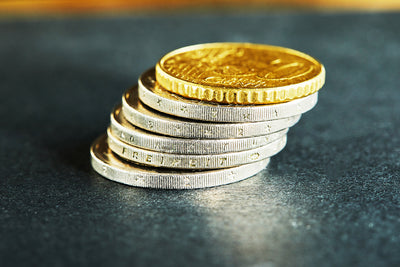
Leave a comment
This site is protected by hCaptcha and the hCaptcha Privacy Policy and Terms of Service apply.